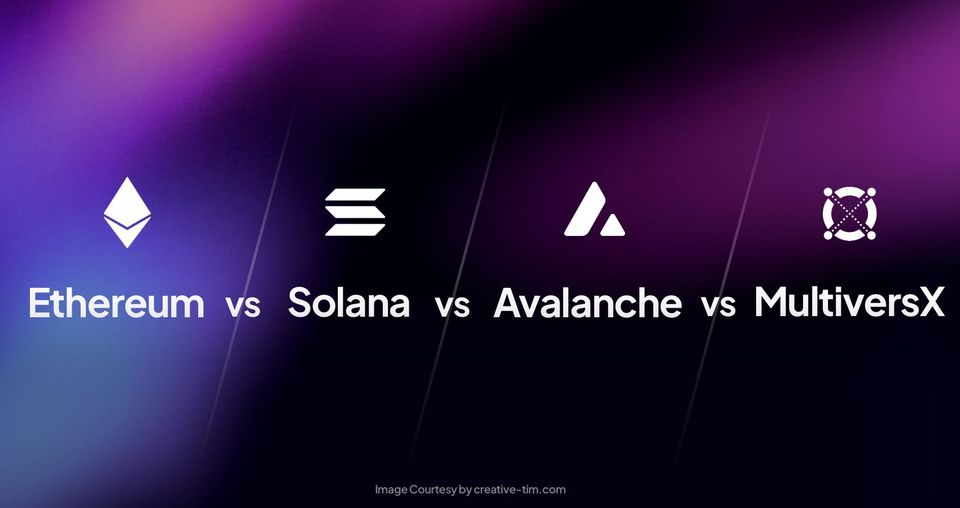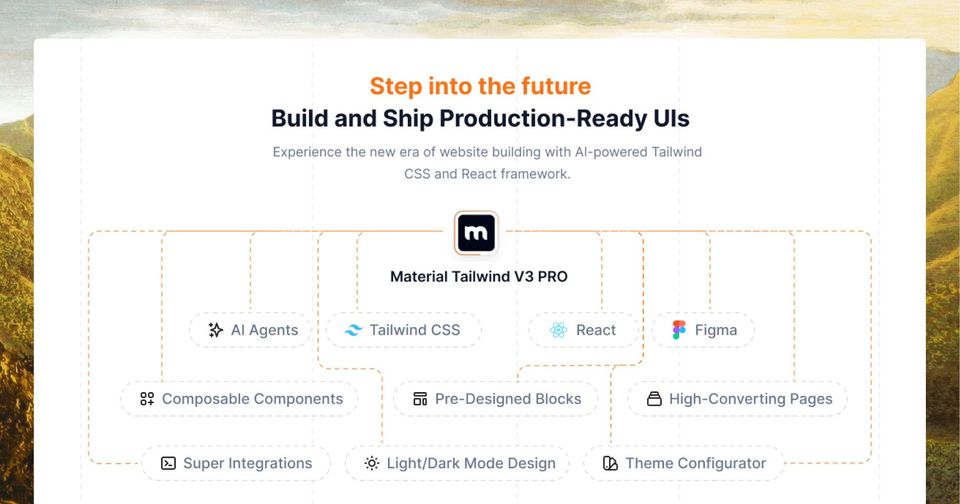With the introduction of new and advanced blockchain platforms in the Web 3.0 scene, the narrative around Ethereum has slowly shifted towards its younger “Ethereum Alternatives”. Solana, Avalanche, and MultiversX (former Elrond) are some of the crypto blockchains that are given this terminology, as they share similar features but are comparatively cheaper and better than Ethereum.
Our research was made during a timespan of a couple of weeks, between August 2022 and October 2022, while there was the transition from Ethereum v1.0 (PoW) to Ethereum v2.0 (PoS). We will try to cover the best of both worlds and explain as much as we can about this change but not deviate from the main subject of the article with the comparison between chains. For a more detailed explanation please check this article from Coindesk: Ethereum vs Eth 2.
So, as a crypto geek, you might be wondering if there are alternative platforms whose hype is worth it. What features do they share with Ethereum? What features do they offer better than Ethereum? How do the costs, architecture, and availability of these chains compare to that of Ethereum?
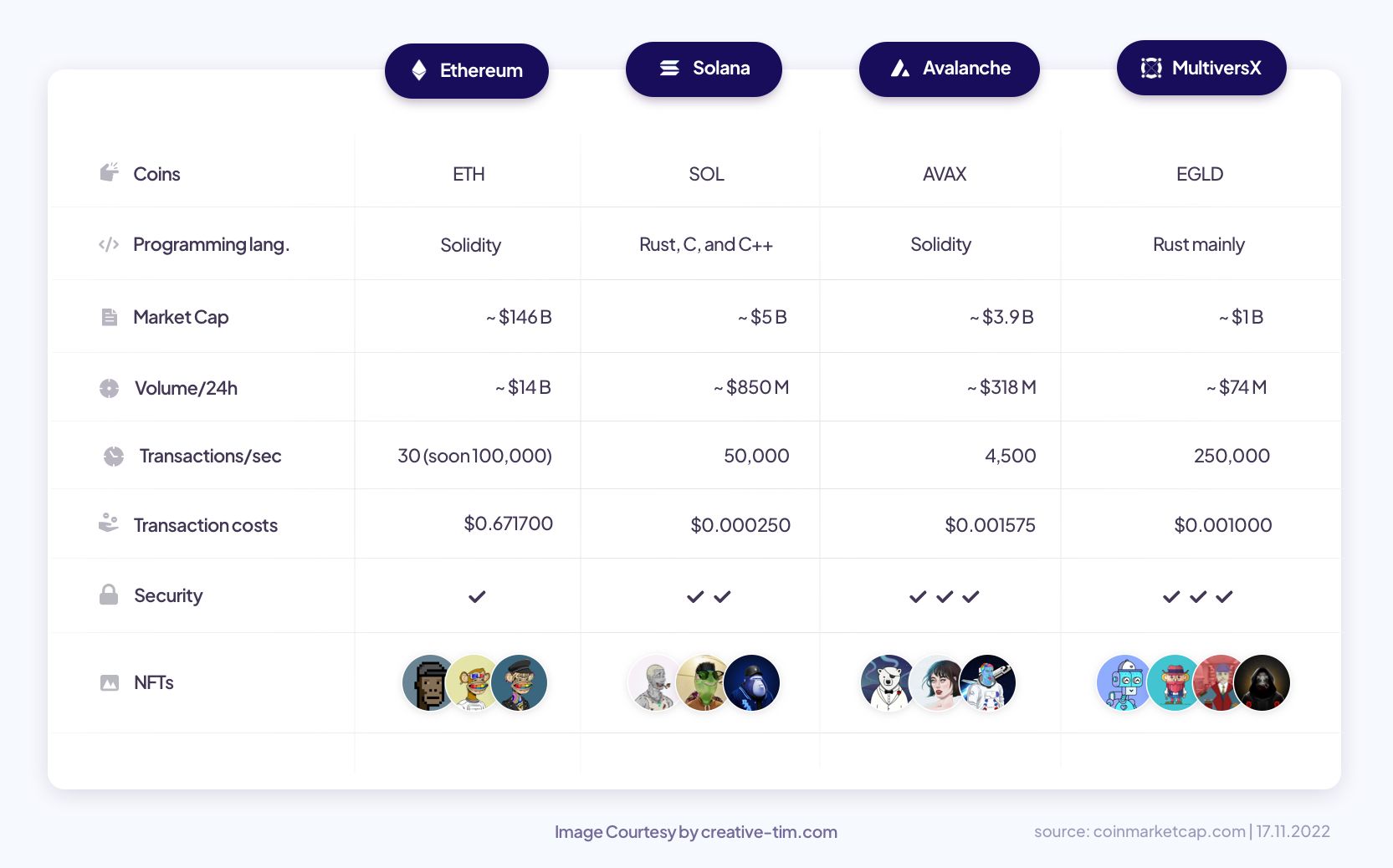
The purpose of this article is to do a minute-level comparison between Ethereum and its supposed alternatives. While all Solana, MultiversX (former Elrond), and Avalanche have soared significantly in their market capitalization, there are still features that Ethereum offer, that makes it a sought-after chain, even amid a comparatively dry blockchain landscape.
Table of contents:
1. Mechanism
2. Architecture
3. Programming language
4. Speed
5. Scalability
6. Security
7. Transaction Costs
8. Coins
9. Market capitalization
10. Developers ecosystem
11. Best Projects
12. NFTs
1. Mechanism
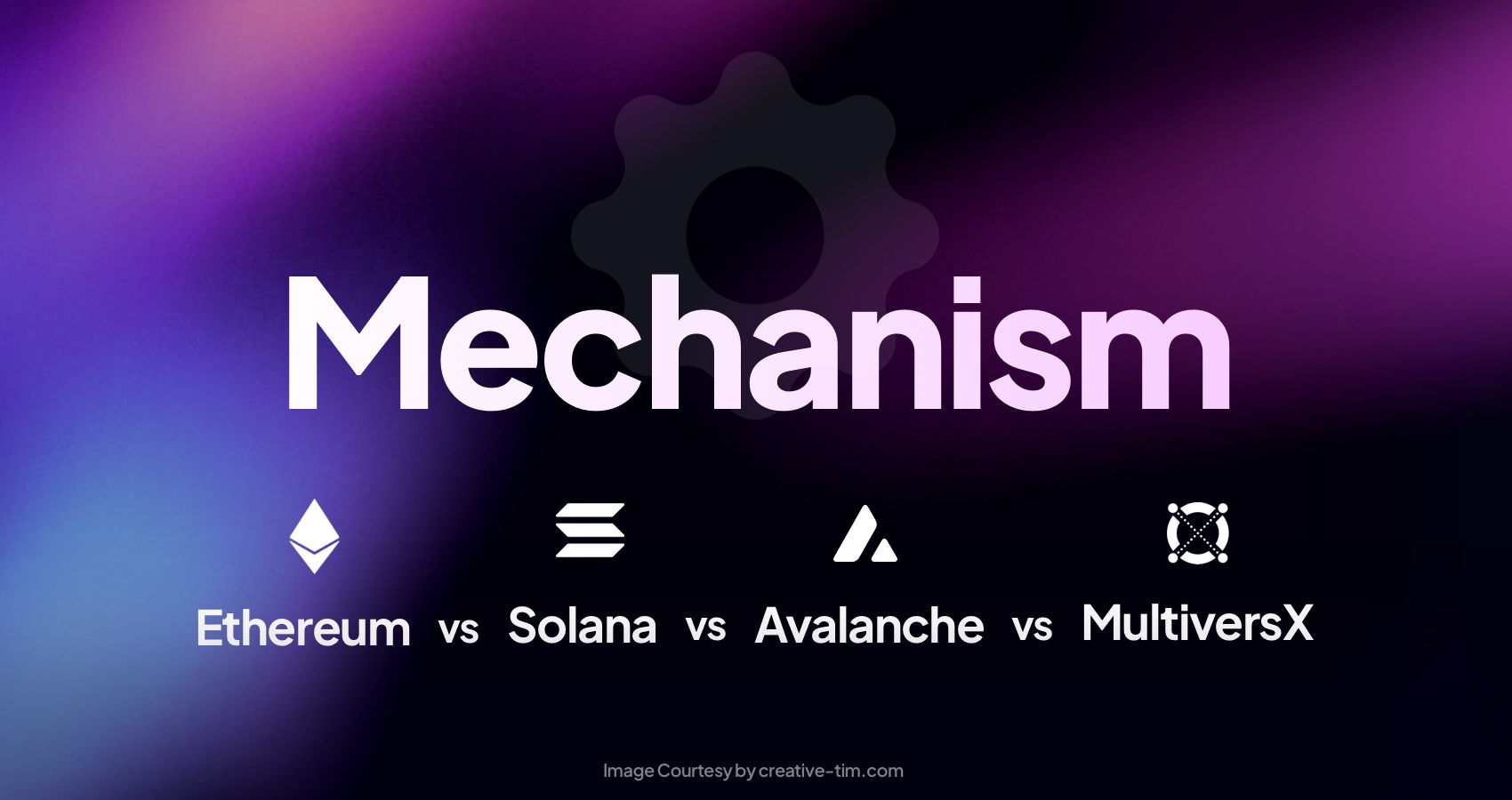
Ethereum
Ethereum v1.0 used the Proof-of-work (PoW) consensus mechanism whereby miners use a machine’s processing power to verify transactions and agree on the current state of the distributed ledger.
Ethereum v2.0 is using a Proof-of-Stake (PoS) consensus, which uses randomly selected validators to confirm transactions and create new blocks.
Solana
Solana is the first blockchain platform to use the Tower Byzantine Fault Tolerance (BFT) consensus mechanism on top of the Proof-of-History (PoH) consensus mechanism, whereby a synchronized clock with a proof of history clock is used to reach consensus on network transactions.
Avalanche
Avalanche uses its Snow consensus protocol founded on Proof-of-Stake (PoS) which randomly samples network nodes to validate transactions.
MultiversX (Elrond)
MultiversX uses the Proofo-of-Stake (PoS) consensus mechanism which unlike Proof-of-work (PoW) does not use miners, but selects the creator of the next block depending on different variants (such as wealth, or stake in the system) who determine and verify transactions.
2. Architecture
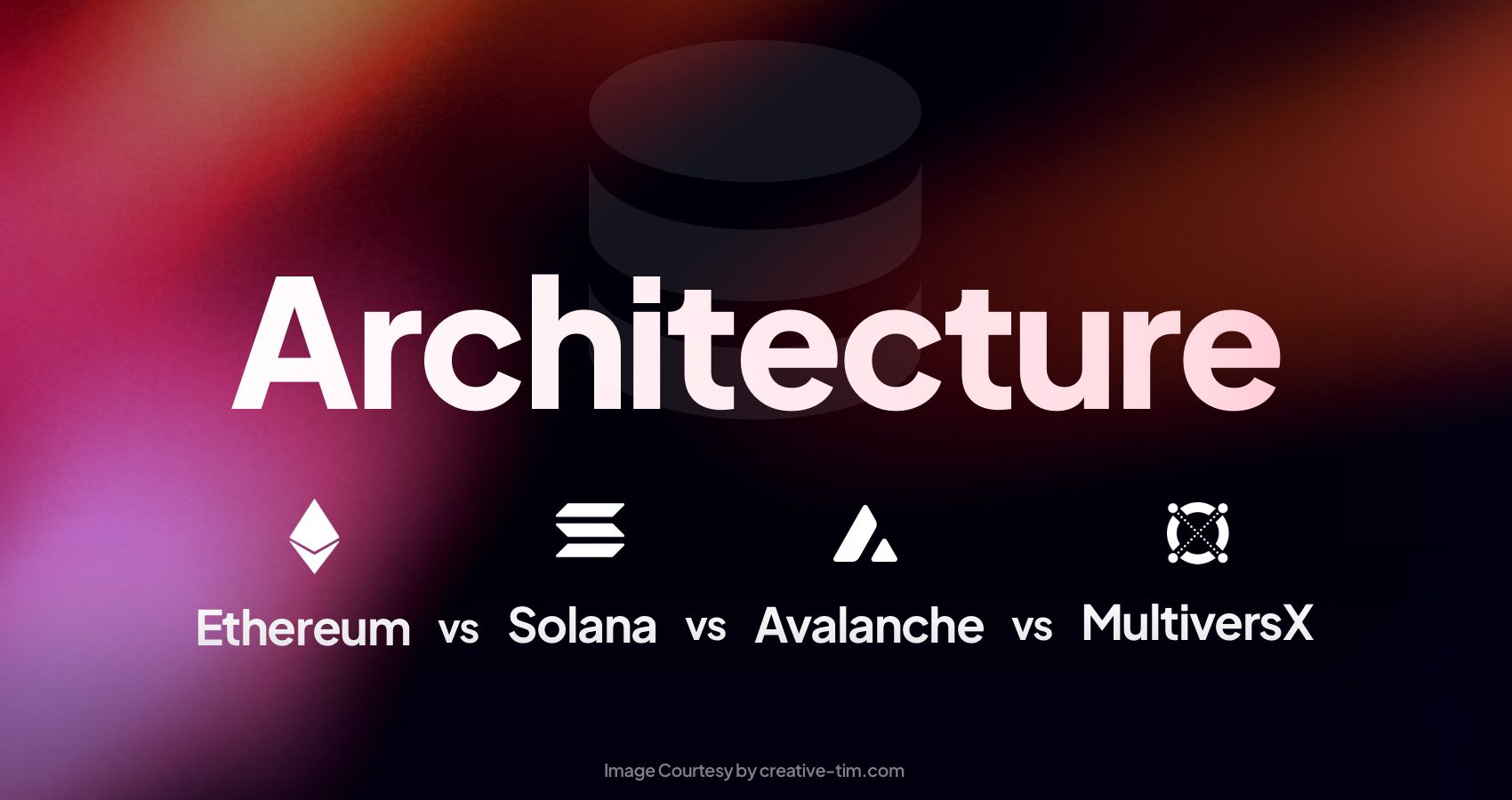
Ethereum
The Ethereum foundation created the Ethereum blockchain as a decentralized computing platform that can run decentralized apps or dApps based on smart-contracts.
Its network architecture is a peer-to-peer (P2P) network of clients that can verify transactions, execute smart contracts or process new blocks in the chain. EVM or the Ethereum Virtual Machine is the runtime environment whereby the P2P network runs. All Ethereum clients run the EVM to be connected to the network.
Solana
Solana is a permissionless blockchain that depends on clusters for its implementation. The Solana cluster is a group of independently owned computers that verify the output of untrusted programs.
The cluster produces a record of events called the ledger, which is preserved for the lifetime of the cluster. The cluster has a leader, who sequences the messages, executes the transactions, publishes the transactions, and sends the final state to validators who validate the transactions.
Avalanche
The Avalanche architecture consists of virtual machines that are deployed across many subnetworks (sets of validators that achieve consensus). Each VM instance (also called a chain) has a ChainID and can only be part of one subnet.
MultiversX (former Elrond)
The MultiversX architecture consists of the MultiversX Web Assembly (WASM VM), the virtual machine that executes smart contracts, and a sharded state architecture that performs shard merging and shard splitting on transactions, data, and networks.
3. Programming language
Ethereum
Solidity is the object-oriented programming language used for implementing smart contracts. Ethereum uses Solidity for developing Ethereum Virtual Machines (EVM). Solidity uses ECMAScript-like syntax that is useful for existing web developers.
Solana
The execution environment of Solana is based on eBPF (Berkely Packet Filter), which allows developers to use Rust, C, and C++.
Avalanche
Avalanche, similar to Ethereum uses the Solidity programming language for writing smart contracts.
MultiversX (former Elrond)
MultiversX Virtual Machine (EVM) supports any programming language that can compile Web Assembly smart contracts. These include the likes of TypeScript, C#, Go, C/C++, and Rust. However, since MultiversX’s smart contract framework is based mostly on Rust, Rust is the recommended language.
4. Speed
Ethereum
Ethereum v1.0 used to support around 30 transactions per second. Ethereum v2.0 or “The Merge” was implemented on 15th September 2022, by upgrading the consensus mechanism from Proof-of-Work (PoW) to Proof-of-Stake (PoS). This is set to increase the transaction speed to 100,000 transactions per second.
Solana
The throughput of Solana is huge as compared to the initial version of Ethereum, sitting at around 50,000 transactions per second, i.e. 400 milliseconds to process each transaction.
Avalanche
The speed of the Avalanche blockchain is comparatively faster than that of Ethereum v1.0 but does not compare to those of Elrond or Solana, Avalanche can process 4,500 transactions per second by splitting the work among multiple blockchains.
MultiversX (Elrond)
MultiversX is considered to be one of the most powerful blockchain platforms that solve problems related to scaling and speed. With its Adaptive State Sharding mechanism, it can carry out 250,000 transactions per second, which is equivalent to executing transactions in near real-time.
5. Scalability
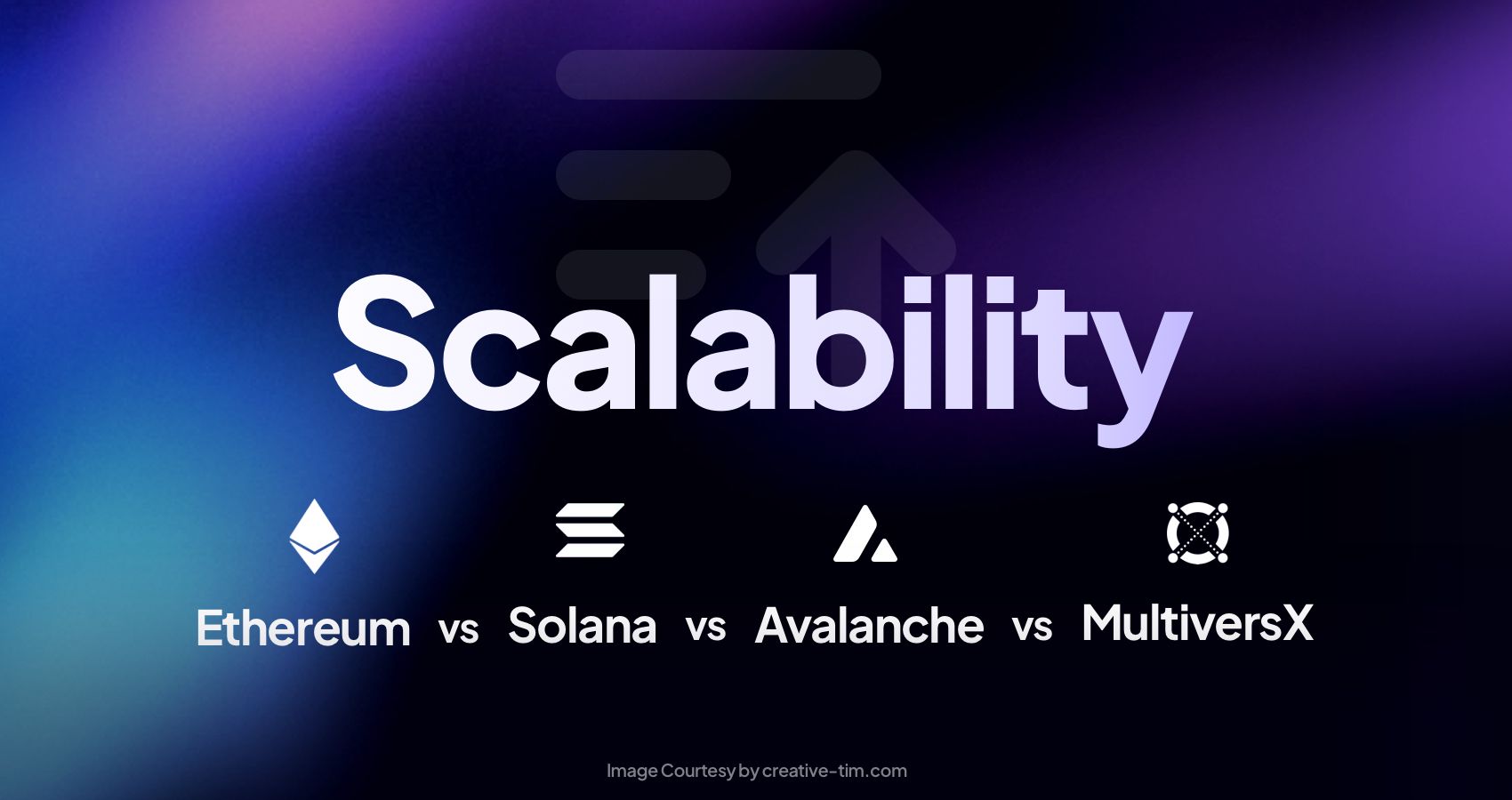
Ethereum
Ethereum v1.0 had an inherent problem with scalability. Every node in the Ethereum network relays transactions and validations to other nodes, to update the network. This means more time-consuming and is particularly the reason why its transaction speed was just around 30 transactions per second.
Network congestion that arises due to the huge volume of transactions carried daily in Ethereum, means delays and skyrocketing fees. With the upgrade to Ethereum 2.0, it is expected that this issue will subside to some extent shortly.
Solana
Solana is supposed to be an extremely stable, secure, and scalable blockchain that offers improved scalability over Ethereum. Things are not always as they are marketed and we have seen multiple times when Solana had stability issues and the whole blockchain was down for multiple hours. It scales as a Layer 1 blockchain, using only CPU and GPU power without the need for sharding or any kind of Layer 2 solutions. At the rate of Moore’s Law, the processing speed of Solana is expected to double every two years.
Avalanche
Avalanche solves the scalability issues prevalent in Ethereum by using subnets. These subnets are individually separate blockchains with their own rules and parameters that are part of the primary network but are effective scaling solutions since they allow a wide range of validators for consensus. Hence, subnets work similarly to layer 2 solutions but are fully interoperable.
MultiversX (former Elrond)
MultiversX deploys a unique architecture to its network in the form of Adaptive State Sharding. In layman's terms, it means dividing the network into smaller fractions to allow nodes to validate and resolve transactions and network operations one at a time. This improved scalability of MultiversX is what makes it a perfect solution for creating dApps with various utilities.
6. Security
Ethereum
Since Ethereum uses huge computing power from all computers in the networks that verify and secure every transaction, it is highly secure and virtually imperceptible to external interference.
Solana
While Solana has better transaction speeds because of the use of the Proof-of-History (PoH) consensus mechanism, it does not provide the same level of security as the Proof-of-Work (PoW) consensus used by Ethereum v1.0.
Avalanche
Avalanche secure network without any compromise to scalability or decentralization. Its own Avalanche Consensus randomly samples validators to reach consensus. This means that once the network reaches consensus, the transactions are irreversible and final, thus making it a highly secure network.
MultiversX (Elrond)
MultiversX’s use of adaptive sharding and secure Proof-of-Stake (SPoS) consensus mechanism, is highly secure. It ensures full decentralization of the network, eliminating the need for 3rd party mediation. All nodes in the network need to stake transactions to secure the network in the validation process, where nodes act as validators.
7. Transaction Costs

Ethereum
Ethereum has an average transaction fee of $0.65 (for Ethereum v2) but we want to mention that before, (for Ethereum v2) the transaction costs were $4 - $5, and they could even go as high as $70.
Solana
Solana’s transaction costs are minuscule, with just $0.00025 per transaction.
Avalanche
Avalanche transaction fees can be as low as $0.001575 but can go up to $2.
MultiversX (Elrond)
MultiversX has a transaction fee of just $0.001 per transaction.
8. Coins (Cryptocurrency)
Ethereum
Ethereum has given rise to a lot of huge popular coins like its very own Ethereum (ETH), Polygon (MATIC), Decentraland (MANA), MarkerDAO (DAI), etc.
Solana
Solana has its crypto coin called Solana (SOL) and has also given rise to others like Audius (AUDIO), Serum(SRM), Raydium (RAY), or Mango (MNGO).
Avalanche
Avalanche, like the other chains, has its own Avalanche (AVAX) and some other coins like: Treasure Under Sea (TUS), DeFi Kingdom (JEWEL) or Crabada Swimmer (CRA)
MultiversX (Elrond)
MultiversX’s native token is called EGLD, or Electronic Gold. Other coins are currently created over the MultiversX network, and we can mention: BlackHat Network (BHAT), ZoidPay (ZPAY), WamApp (WAM).
9. Market capitalization

Since the crypto space is a highly volatile ecosystem, the changes in Market Cap can be huge on a daily basis. These are the values that we got from coinnmarketcap.com on 16th November 2022. We will do updates based on changes in the future.
Ethereum
Ethereum’s market capitalization currently sits around a massive $148 Billion.
Solana
Solana’s market capitalization is around $5 Billion.
Avalanche
Avalanche’s market capitalization also falls in the billion-dollar range with its most recent valuation being capped at $4 Billion.
MultiversX (Elrond)
MultiversX has a market cap of around $1 Billion.
10. Developers ecosystem
Ethereum
Ethereum has a dedicated portal for Ethereum resources, experimentation, local environment setup, and tutorials. Everything in Ethereum is open-source, hence developers can extend and improve its documentation.
You can start learning about Ethereum, ETH, how to get a wallet, and protocol here: Learning Hub. You can also find a lot of resources on their official Github repositories.
For developers who want to collaborate on software over a peer-to-peer network and built on Git they can start building with Radicle.
If you want to start learning by coding differently you have some Code Sandboxes too.
Solana
Solana also has a community of developers who create and maintain its extensive documentation of resources. Its documentation comprises core learning resources, reference documentation, courses, and CLI tools along with dedicated support.
You can find on Github a dApp starter template and a step-by-step course on how to start with Rust & React on Solana.
There are also some videos on their bootcamp on Youtube: Solana Bootcamp Day 1 - Intro to Solana.
Avalanche
You can also view the documentation for the Avalanche platform which consists of information about its platform, mechanisms, whitepapers, and projects.
There is a step-by-step post on how to create your first dApp on Avalanche and how to create your own Subnet on Avalanche.
Some more tools, like the Avalanche CLI, can be found on their official Github Repo.
MultiversX (Elrond)
MultiversX also has its ecosystem of resources which consists of its docs, blog posts about its technical and economic aspects, as well as a dedicated community.
You can start with the basics of how to build your first dApp in 15 minutes.
We created some user-friendly starters for developers too. You can start using a set of UI dedicated elements created specifically for MultiversX. Elrond Elements is a fully coded, open-source design system for designers, developers, and creators.
Another dApp starter for NFTs collection creators can be found on our Github and it is Open Source. The dApp features include: showcasing all the NFTs that you own from a specific collection with details, login process using the cryptocurrency wallet, and an innovative design by Creative Tim.
For those who want to speed things up, we recommend this article on how to build your first dApp with Decentology’s starters.
Here is an overview of the stars on Github for each chain:
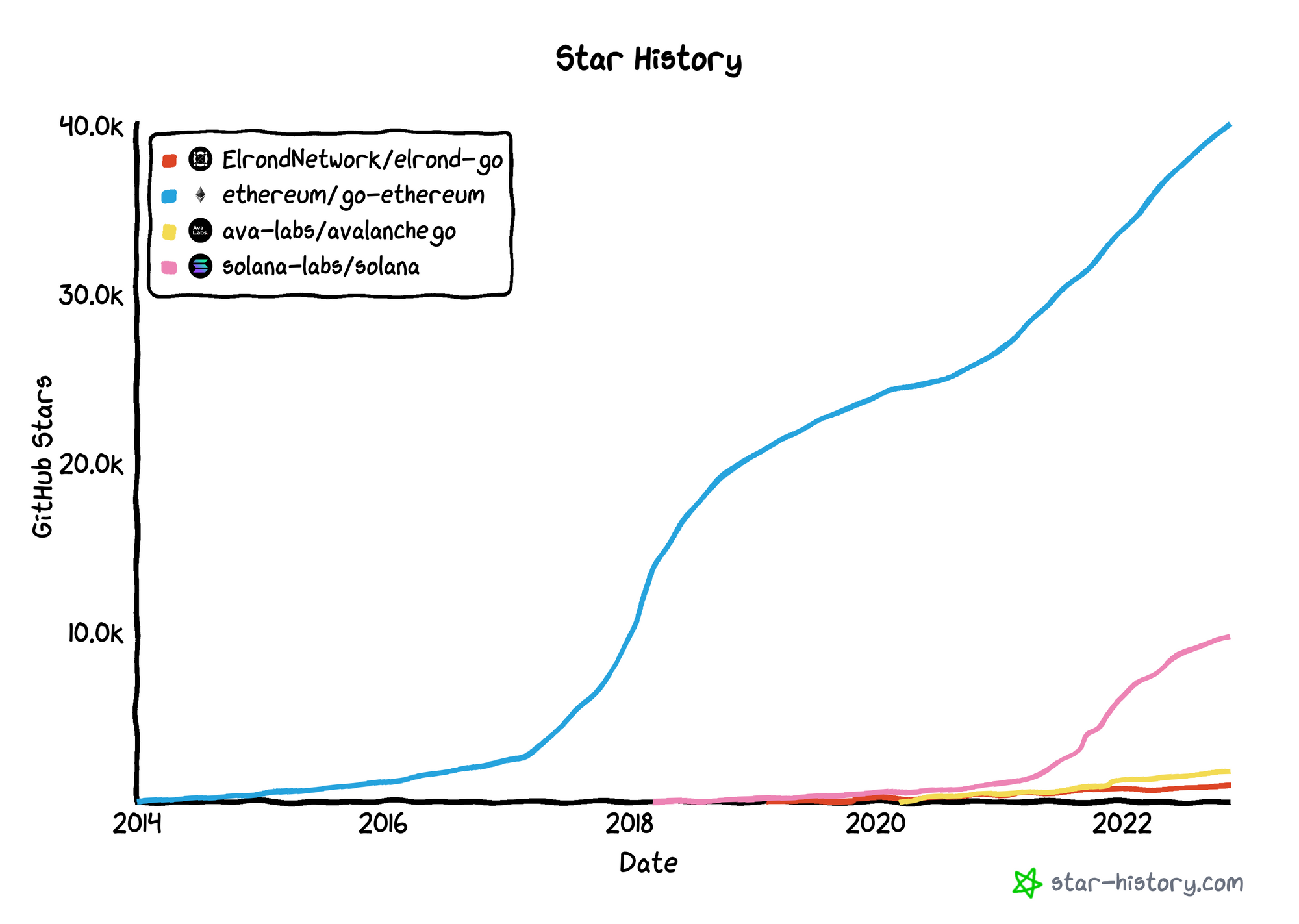
11. Best Projects
Ethereum
Ethereum boasts a huge load of awesome projects running on its blockchain. Among them, decentralized finance (DeFi) protocols, Uniswap decentralized exchange (DEX) protocol, MakerDAO (a decentralized lending protocol, Curve Finance (an automated market maker), and app.1inch (a crypto exchange aggregator) are the most notable.
Solana
Solana also has its host of best projects which include the likes of STEPN (https://stepn.com/) (a Web3 lifestyle app), Star Atlas (a metaverse-based online game), Civic (a blockchain-based identity management system), Audius (a decentralized music streaming system) the most popular.
Avalanche
Since Avalanche is a highly scalable blockchain, it is also not short of awesome projects. Its well-known ones are Benqi(a non-custodial liquidity market protocol), Avalaunch (XAVA, a launchpad for innovative projects), Traderjoe (an automated market maker-based decentralized exchange), and Pangolin (a decentralized exchange).
MultiversX (former Elrond)*
MultiversX also has a large ecosystem and a whole lot of projects that have taken up the crypto world by storm. Some of them are BHero (showcasing and launching crypto project startups) with their sister project BlackHat Network (The Internet of Freelancers), Maiar DEX (financial engine), and QoWatt (an EV green charging station network).
12. NFTs (Non-Fungible Token)
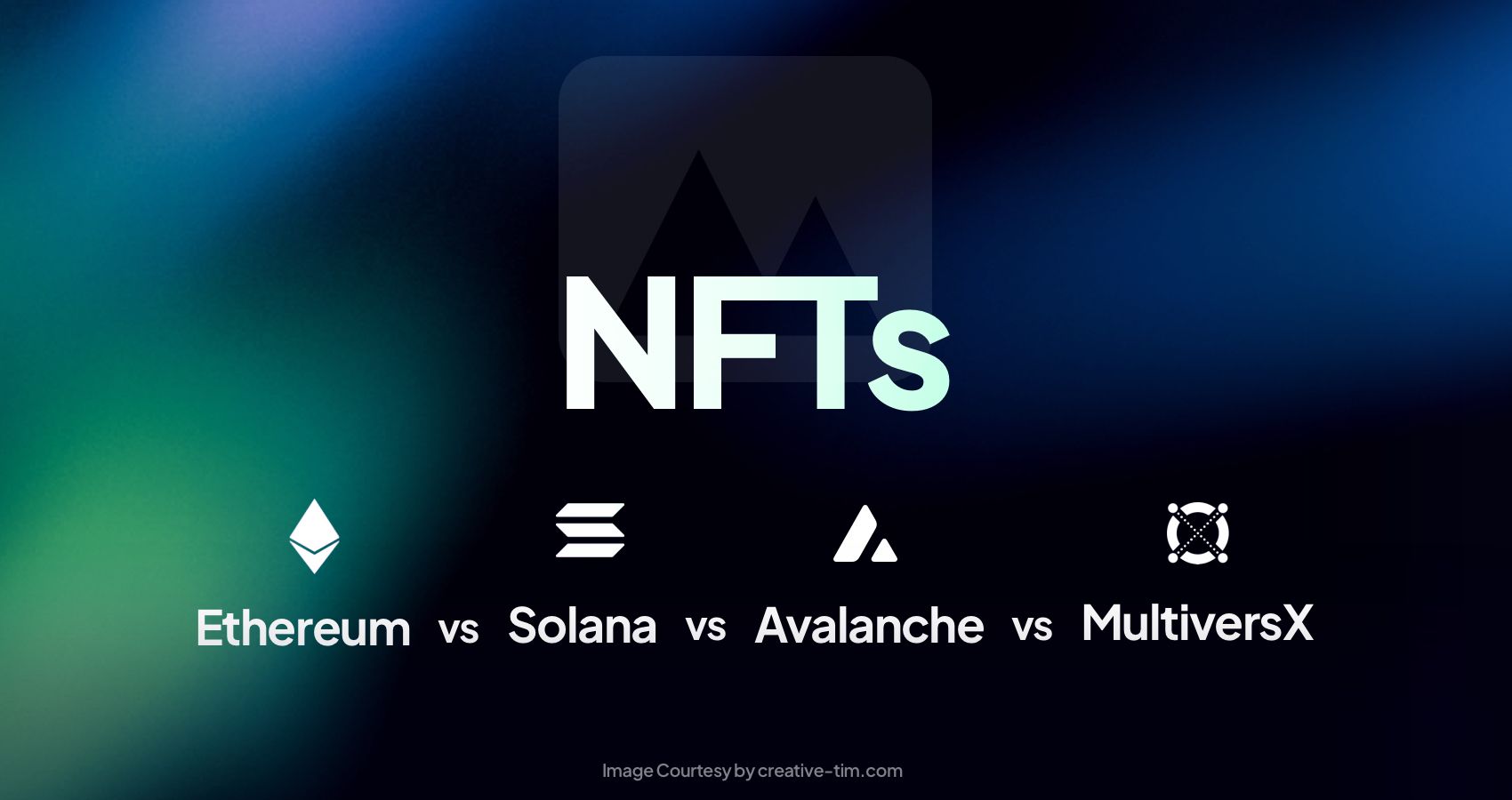
Ethereum
Ethereum hosts NFTs like CryptoPunks, the Bored Ape Yacht Club (BAYC), Yacht Club (MAYC)
Solana
DeGods, Solana Monkey Business, Degenerate Ape Academy, and Aurory are the NFTs based on Solana.
Avalanche
The NFTs based on Avalanche are Arctic Bear Crew, BitPixels, Cryptoseals, and Nomspace.
MultiversX (Elrond)
MultiversX also has its share of monkey-based NFTs like Elrond Apes, along with others like NF-Tim (built by Creative Tim), BH Agents (built by BHero), Elrond Giants, Drifters.

Conclusion: Which one is better?
All the four blockchain platforms we discussed above; Ethereum, Solana, Avalanche, and MultiversX (former Elrond) each have unique characteristics that have made them some of the highly popular platforms in the blockchain world.
While Ethereum seems to be a better choice when it comes to security, its scalability and speed are an issue. Solana is a very fast platform with low processing speed but has a few problems related to security and stability. Avalanche is one of the most secure platforms and has faster speed in comparison to Ethereum, but its speed is no match to that of MultiversX(Elrond), which has enormous processing speeds and scalability.
Hence, the conclusion on which one to choose for your next project, or which one to invest, in highly depends on your personal choice and requirement. We hope that with the parameters discussed above, you will be able to make your required choice.
For further reading, check the images below to easily understand what each blockchain ecosystem implies:
Ethereum
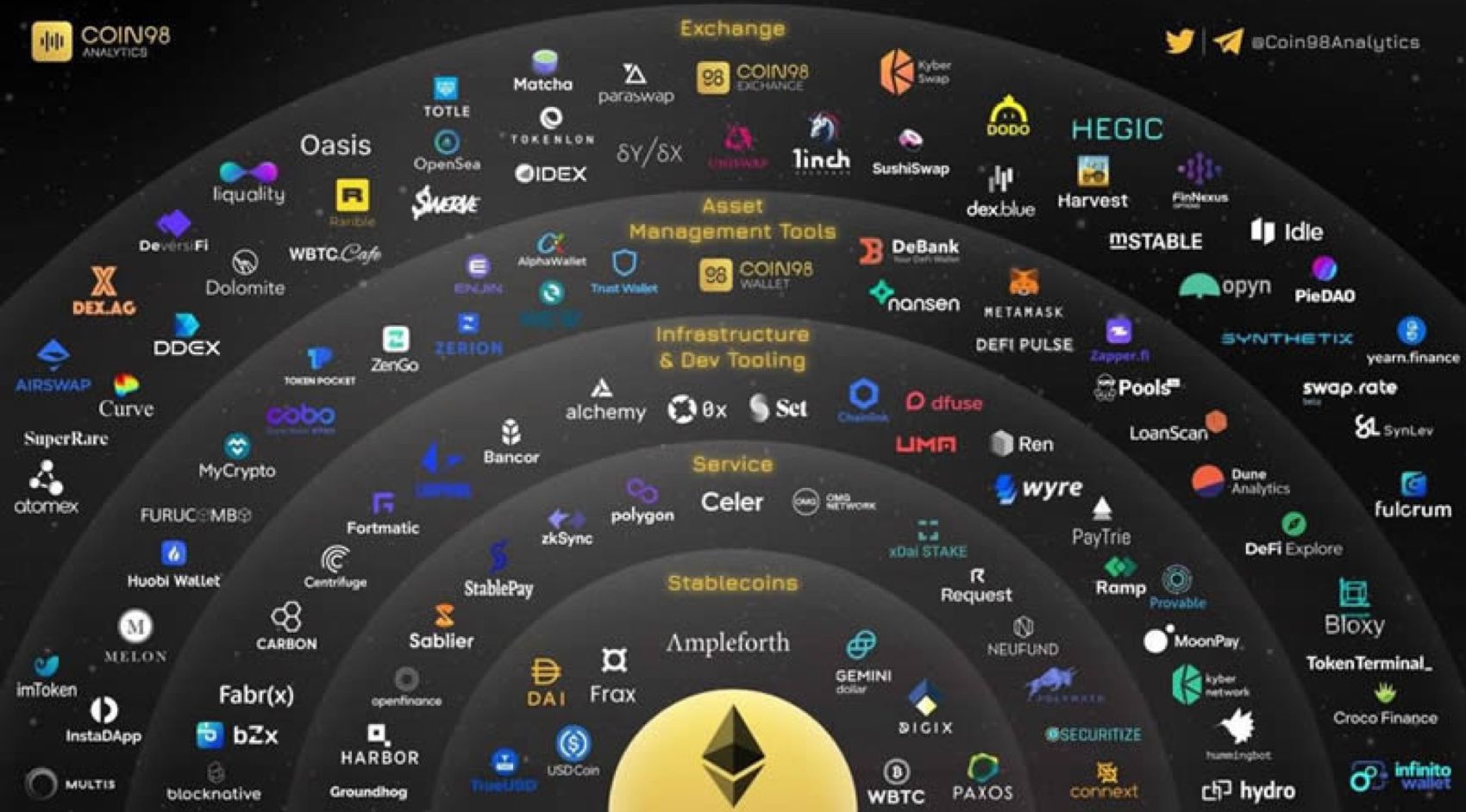
Solana
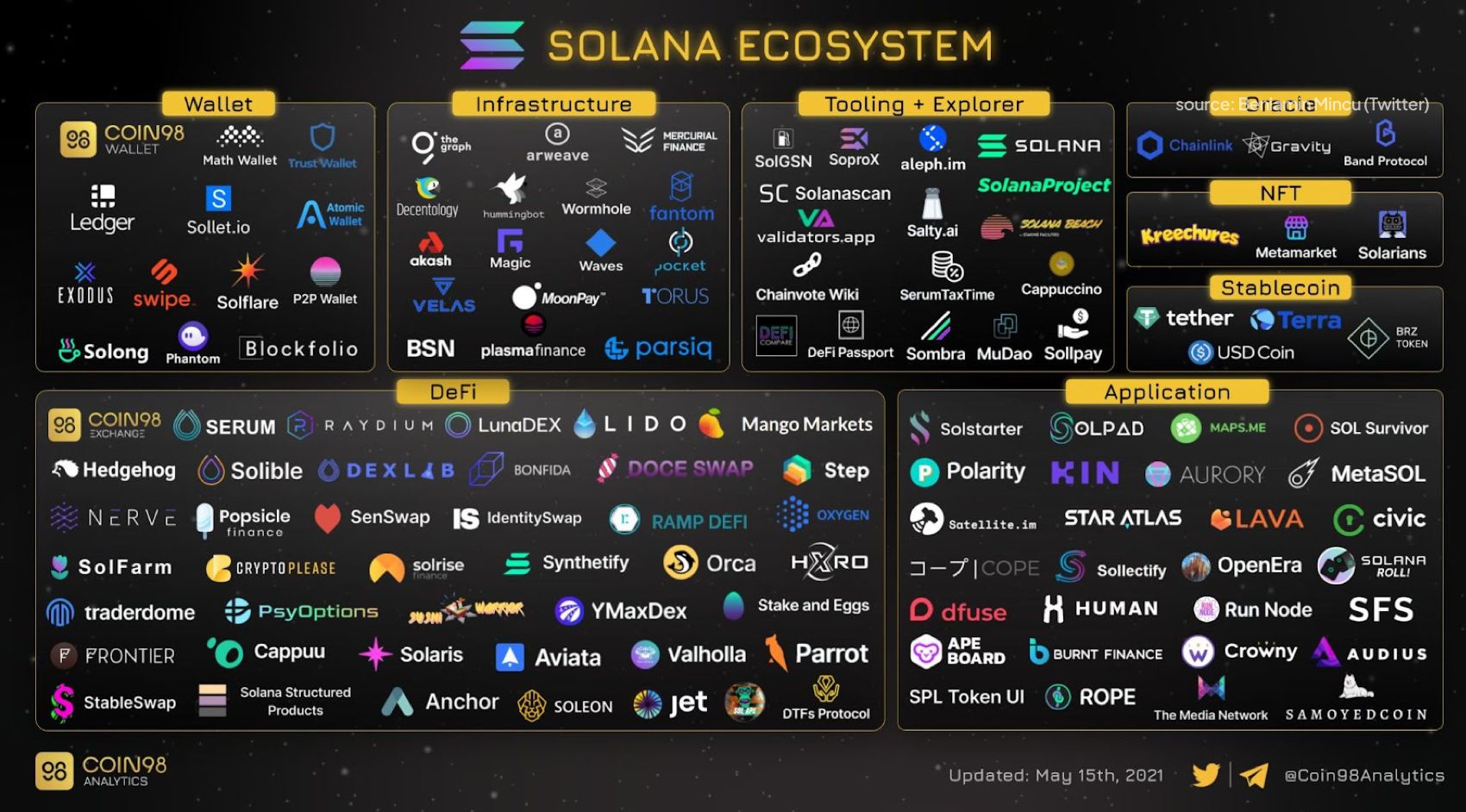
Avalanche
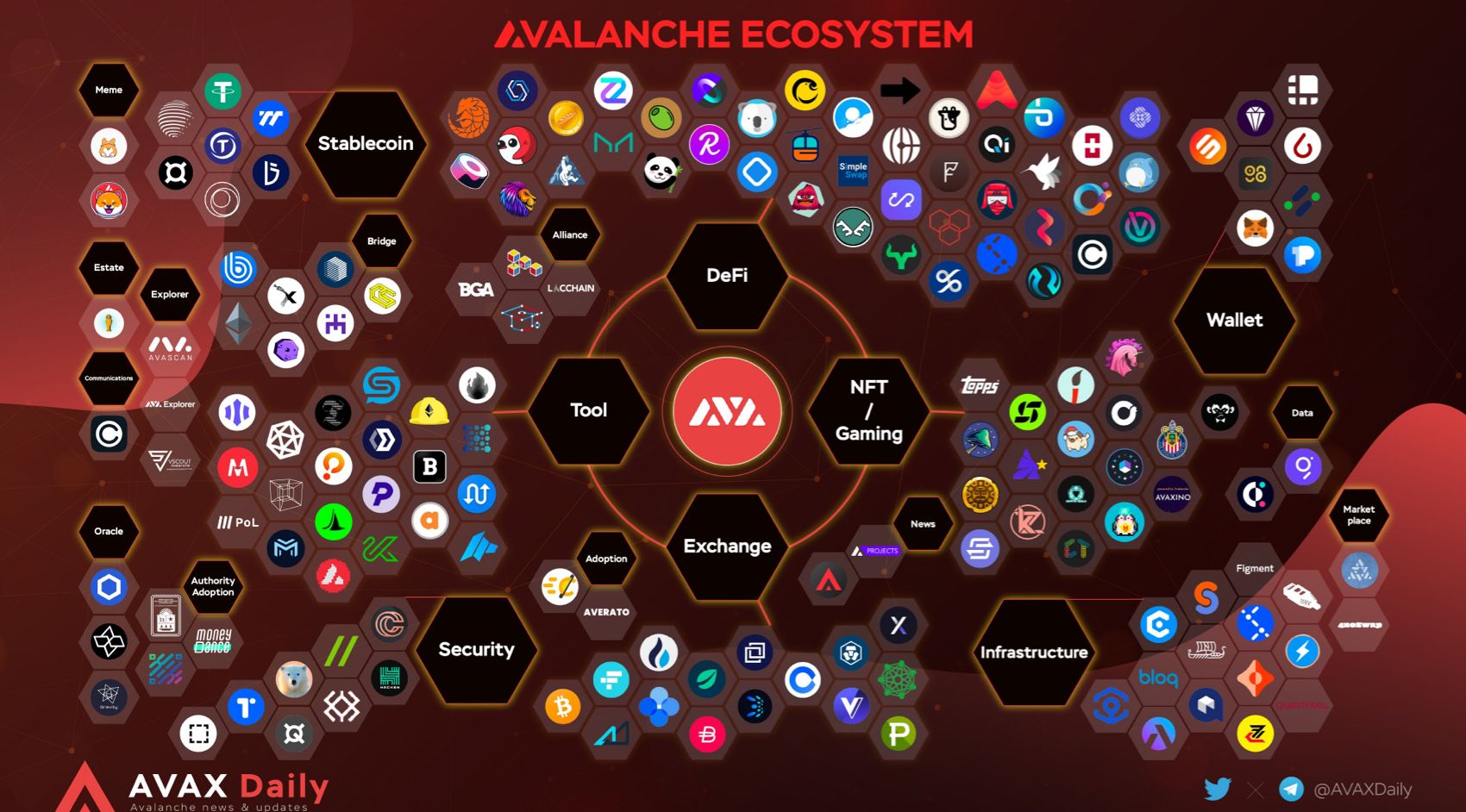
MultiversX (Elrond)

Interested in Blockchain and Web 3.0? Read this comprehensive article on what blockchain technology actually is and how it works in simple terms.
I want to personally thank and give credit to my colleague who helped me do this research:
You can find me on:
Twitter: twitter.com/Axelut
linkedin: linkedin.com/in/alexpaduraru
email: [email protected]
Disclaimer: This article is intended for general guidance and information purposes only. The contents of this article are not to be construed as legal, business, investment, or tax advice. You should consult with your advisors for all legal, business, investment, and tax implications and advice.
References:
- Elrond Network (EGLD): An Internet Scale Blockchain
- Solana (blockchain platform)
- Ethereum ‘Merge’ Finally Gets Done: Here Are The Key Changes To Expect
- How Long Does It Take To Transfer Solana?
- Advantages of the Elrond blockchain
- How Solana is Changing the Game with Scalable Blockchain Solutions
- Solana vs. Ethereum: Which Is the Better Investment?
- Solana Projects: Top 9 Solana Projects in 2022
- Ethereum: Top 10 Biggest Projects
- Top Coins on Solana Blockchain
- Maiar Exchange Tokens

